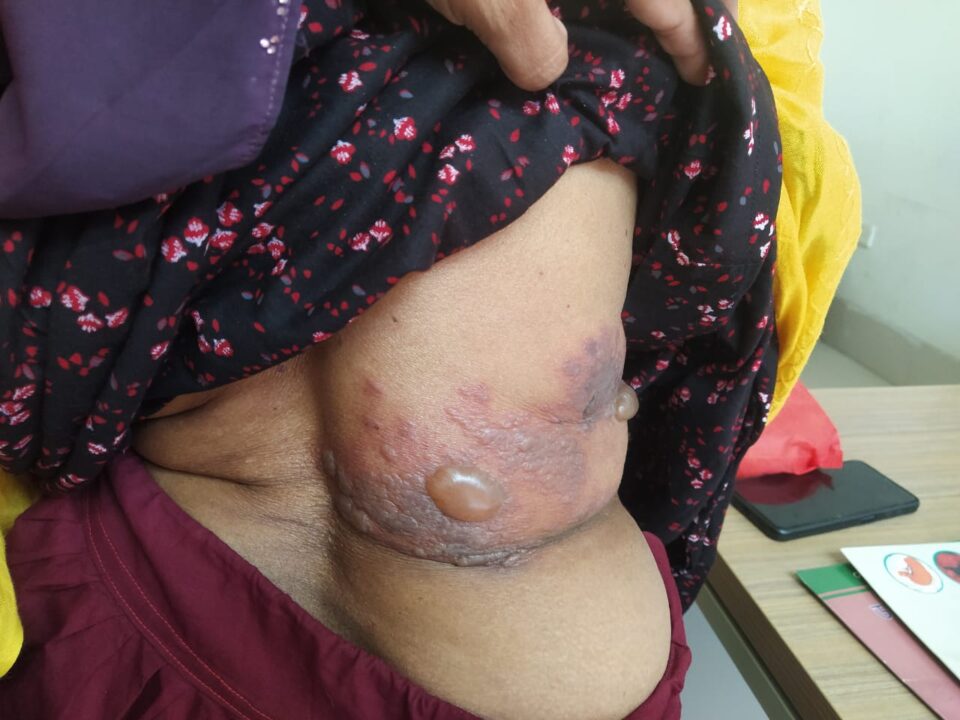FEVER
-
- Normal temperature
- Definition of Fever
- Types of Fever
- Benefits of Fever
- Pathogenesis of chill and rigor
- Fall by lysis and crisis
- Temperature pulse ratio
- Temperature respiration ratio mn
- Fever with rash
- Hypothermia and hyperthermia
- Some terms:
-
- Aseptic Fever
- Periodic Fever
- Undulant Pyrexia
- Drug Fever
- Factitious Fever
- Hectic temperature
- Haemorrhagic Fever
- PUO (Essential Fever)
- With every 1°F rise of temperature, above 100°F,
- the pulse rate increases by 10,
- the respiratory rate by 4, and
- BMR by 7.
- Oxygen consumption increases by 13%
- Insensible water loss by 10% (100-200ml)
Normal temperature
The centigrade (Celsius) scale is in general use in the UK (normal <37°), but many people are still more familiar with the Fahrenheit scale (normal <98.4°).
Definition of fever:
An A.M. temperature of >37.2°C (>98.9°F) or a P.M. temperature of >37.7°C (>99.9°F) would define a fever (A.M. 99°F & P.M. 100°F)
Types of Fever
- Continuous:
When fever does not fluctuate more than 1°C (1.50F) during 24 hours (remember
10C is normal diurnal variation)
Example:
- Typhoid fever
- Military TB
- Lobar pneumonia
- Remittent:
When daily fluctuations exceed 1°C but never touches baseline called Remittent fever
Example:
- Amoebic liver abscess
- Lung abscess
- Collection of pus in the tissues
- Intermittent:
When fever present only for several hours during 24 hours (touches the baseline) it is called intermittent fever
3 types:
- Quotidian:
Fever occurs daily
Example: Kala Azar
- Tertian:
Fever occurs every alternate day
Example: Malaria (P vivax & ovale)
- Quartan:
Fever occurs after every 2 days interval
Example: P malariae
Hectic / Nadir:
The temperature variation between peak and nadir is very large and exceeds 5 degree Celsius e.g. septicaemia
Undulant fever: gradual rise over several days followed by gradual falls
Brucellosis; lymphogranulomatosis
Inverted fever: morning temperature is more than evening e.g. Brucellosis
Saddle back: fever for 2-3 days then afebrile for 2-3 days then again fever e.g. dengue
Jarisch-Herxheimer fever:
Fever that occurs several hours after treatment with antibiotic e.g. syphilis, leptospirosis
Haemorrhagic fever
Causes:
Bacteria:
Meningococcemia
Gram negative septicaemia
Plague
Virus:
Dengue fever
Yellow fever
Lassa fever
Ebola virus
Hantan fever (haemorrhagic fever with renal syndrome)
ABC: argentinian, bolivian. crimean-congo
Rickettsiae:
Rocky Mountain spotted fever
Scrub typhus
Spirochaetes:
Leptospirosis
FEVER
-
- Normal temperature
- Definition of Fever
- Types of Fever
- Benefits of Fever
- Pathogenesis of chill and rigor
- Fall by lysis and crisis
- Temperature pulse ratio
- Temperature respiration ratio mn
- Fever with rash
- Hypothermia and hyperthermia
- Some terms:
-
- Aseptic Fever
- Periodic Fever
- Undulant Pyrexia
- Drug Fever
- Factitious Fever
- Hectic temperature
- Haemorrhagic Fever
- PUO (Essential Fever)
- With every 1°F rise of temperature, above 100°F,
- the pulse rate increases by 10,
- the respiratory rate by 4, and
- BMR by 7.
- Oxygen consumption increases by 13%
- Insensible water loss by 10% (100-200ml)
Normal temperature
The centigrade (Celsius) scale is in general use in the UK (normal <37°), but many people are still more familiar with the Fahrenheit scale (normal <98.4°).
Definition of fever:
An A.M. temperature of >37.2°C (>98.9°F) or a P.M. temperature of >37.7°C (>99.9°F) would define a fever (A.M. 99°F & P.M. 100°F)
Types of Fever
- Continuous:
When fever does not fluctuate more than 1°C (1.50F) during 24 hours (remember
10C is normal diurnal variation)
Example:
- Typhoid fever
- Military TB
- Lobar pneumonia
- Remittent:
When daily fluctuations exceed 1°C but never touches baseline called Remittent fever
Example:
- Amoebic liver abscess
- Lung abscess
- Collection of pus in the tissues
- Intermittent:
When fever present only for several hours during 24 hours (touches the baseline) it is called intermittent fever
3 types:
- Quotidian:
Fever occurs daily
Example: Kala Azar
- Tertian:
Fever occurs every alternate day
Example: Malaria (P vivax & ovale)
- Quartan:
Fever occurs after every 2 days interval
Example: P malariae
Hectic / Nadir:
The temperature variation between peak and nadir is very large and exceeds 5 degree Celsius e.g. septicaemia
Undulant fever: gradual rise over several days followed by gradual falls
Brucellosis; lymphogranulomatosis
Inverted fever: morning temperature is more than evening e.g. Brucellosis
Saddle back: fever for 2-3 days then afebrile for 2-3 days then again fever e.g. dengue
Jarisch-Herxheimer fever:
Fever that occurs several hours after treatment with antibiotic e.g. syphilis, leptospirosis
Haemorrhagic fever
Causes:
Bacteria:
Meningococcemia
Gram negative septicaemia
Plague
Virus:
Dengue fever
Yellow fever
Lassa fever
Ebola virus
Hantan fever (haemorrhagic fever with renal syndrome)
ABC: argentinian, bolivian. crimean-congo
Rickettsiae:
Rocky Mountain spotted fever
Scrub typhus
Spirochaetes:
Leptospirosis
FEVER
-
- Normal temperature
- Definition of Fever
- Types of Fever
- Benefits of Fever
- Pathogenesis of chill and rigor
- Fall by lysis and crisis
- Temperature pulse ratio
- Temperature respiration ratio mn
- Fever with rash
- Hypothermia and hyperthermia
- Some terms:
-
- Aseptic Fever
- Periodic Fever
- Undulant Pyrexia
- Drug Fever
- Factitious Fever
- Hectic temperature
- Haemorrhagic Fever
- PUO (Essential Fever)
- With every 1°F rise of temperature, above 100°F,
- the pulse rate increases by 10,
- the respiratory rate by 4, and
- BMR by 7.
- Oxygen consumption increases by 13%
- Insensible water loss by 10% (100-200ml)
Normal temperature
The centigrade (Celsius) scale is in general use in the UK (normal <37°), but many people are still more familiar with the Fahrenheit scale (normal <98.4°).
Definition of fever:
An A.M. temperature of >37.2°C (>98.9°F) or a P.M. temperature of >37.7°C (>99.9°F) would define a fever (A.M. 99°F & P.M. 100°F)
Types of Fever
- Continuous:
When fever does not fluctuate more than 1°C (1.50F) during 24 hours (remember
10C is normal diurnal variation)
Example:
- Typhoid fever
- Military TB
- Lobar pneumonia
- Remittent:
When daily fluctuations exceed 1°C but never touches baseline called Remittent fever
Example:
- Amoebic liver abscess
- Lung abscess
- Collection of pus in the tissues
- Intermittent:
When fever present only for several hours during 24 hours (touches the baseline) it is called intermittent fever
3 types:
- Quotidian:
Fever occurs daily
Example: Kala Azar
- Tertian:
Fever occurs every alternate day
Example: Malaria (P vivax & ovale)
- Quartan:
Fever occurs after every 2 days interval
Example: P malariae
Hectic / Nadir:
The temperature variation between peak and nadir is very large and exceeds 5 degree Celsius e.g. septicaemia
Undulant fever: gradual rise over several days followed by gradual falls
Brucellosis; lymphogranulomatosis
Inverted fever: morning temperature is more than evening e.g. Brucellosis
Saddle back: fever for 2-3 days then afebrile for 2-3 days then again fever e.g. dengue
Jarisch-Herxheimer fever:
Fever that occurs several hours after treatment with antibiotic e.g. syphilis, leptospirosis
Haemorrhagic fever
Causes:
Bacteria:
Meningococcemia
Gram negative septicaemia
Plague
Virus:
Dengue fever
Yellow fever
Lassa fever
Ebola virus
Hantan fever (haemorrhagic fever with renal syndrome)
ABC: argentinian, bolivian. crimean-congo
Rickettsiae:
Rocky Mountain spotted fever
Scrub typhus
Spirochaetes:
Leptospirosis
FEVER
-
- Normal temperature
- Definition of Fever
- Types of Fever
- Benefits of Fever
- Pathogenesis of chill and rigor
- Fall by lysis and crisis
- Temperature pulse ratio
- Temperature respiration ratio mn
- Fever with rash
- Hypothermia and hyperthermia
- Some terms:
-
- Aseptic Fever
- Periodic Fever
- Undulant Pyrexia
- Drug Fever
- Factitious Fever
- Hectic temperature
- Haemorrhagic Fever
- PUO (Essential Fever)
- With every 1°F rise of temperature, above 100°F,
- the pulse rate increases by 10,
- the respiratory rate by 4, and
- BMR by 7.
- Oxygen consumption increases by 13%
- Insensible water loss by 10% (100-200ml)
Normal temperature
The centigrade (Celsius) scale is in general use in the UK (normal <37°), but many people are still more familiar with the Fahrenheit scale (normal <98.4°).
Definition of fever:
An A.M. temperature of >37.2°C (>98.9°F) or a P.M. temperature of >37.7°C (>99.9°F) would define a fever (A.M. 99°F & P.M. 100°F)
Types of Fever
- Continuous:
When fever does not fluctuate more than 1°C (1.50F) during 24 hours (remember
10C is normal diurnal variation)
Example:
- Typhoid fever
- Military TB
- Lobar pneumonia
- Remittent:
When daily fluctuations exceed 1°C but never touches baseline called Remittent fever
Example:
- Amoebic liver abscess
- Lung abscess
- Collection of pus in the tissues
- Intermittent:
When fever present only for several hours during 24 hours (touches the baseline) it is called intermittent fever
3 types:
- Quotidian:
Fever occurs daily
Example: Kala Azar
- Tertian:
Fever occurs every alternate day
Example: Malaria (P vivax & ovale)
- Quartan:
Fever occurs after every 2 days interval
Example: P malariae
Hectic / Nadir:
The temperature variation between peak and nadir is very large and exceeds 5 degree Celsius e.g. septicaemia
Undulant fever: gradual rise over several days followed by gradual falls
Brucellosis; lymphogranulomatosis
Inverted fever: morning temperature is more than evening e.g. Brucellosis
Saddle back: fever for 2-3 days then afebrile for 2-3 days then again fever e.g. dengue
Jarisch-Herxheimer fever:
Fever that occurs several hours after treatment with antibiotic e.g. syphilis, leptospirosis
Haemorrhagic fever
Causes:
Bacteria:
Meningococcemia
Gram negative septicaemia
Plague
Virus:
Dengue fever
Yellow fever
Lassa fever
Ebola virus
Hantan fever (haemorrhagic fever with renal syndrome)
ABC: argentinian, bolivian. crimean-congo
Rickettsiae:
Rocky Mountain spotted fever
Scrub typhus
Spirochaetes:
Leptospirosis
Definition of Feve
- Aseptic Fever
- Periodic Fever
- Undulant Pyrexia
- Drug Fever
- Factitious Fever
- Hectic temperature
- Haemorrhagic Fever
- PUO (Essential Fever)



